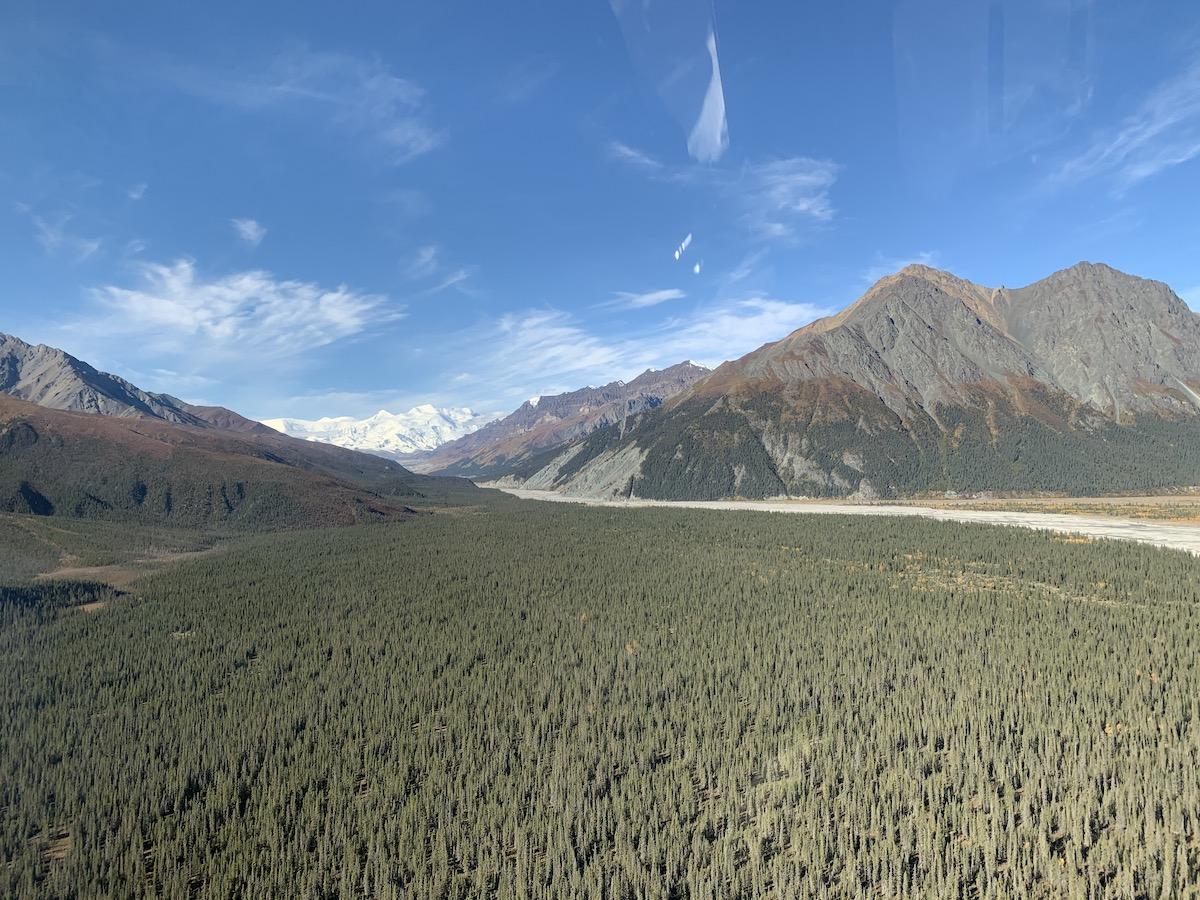
Kluane First Nation Land Guardians and Parks Canada staff land at a candidate site for prescribed fire in Kluane National Park and Reserve/Parks Canada
Canada is investing $2.5 million ($1.8 million USD) over five years to help plan long-term approaches to restore and increase the resilience of the Kluane National Park and Reserve's forests while helping to revitalize Southern Tutchone traditions and culture.
The project — “Dákeyi ukaanathį̀ jè: All of you watch over our country with your heart — Restoring forest ecosystems in Kluane National Park and Reserve” — is a partnership between Champagne and Aishihik First Nations, Kluane First Nation and Parks Canada.
Research is now underway to better understand the history of fire in Kluane, looking at both human-caused and natural wildfires throughout the forested areas of the Yukon park.
Fire is a necessary, natural process for rejuvenating and creating ecosystem diversity. But only 380 hectares (939 acres) have burned in Kluane since 1960 and that has meant that the forest ecosystem is being impaired.
“A fire deficit and a degraded forest ecosystem exist on the Kluane landscape, creating imbalances in the ecology of the park and an increased risk of wildfire,” Parks Canada said in a new release. Research with First Nation partners will support understanding of how they used fire on the land, while providing opportunity for First Nations staff and land guardians to reconnect with the more remote areas of their traditional territories.
Parks Canada aims to restore fire to Kluane by 2025, sharing leadership of this project with Champagne and Aishihik First Nations and Kluane First Nation, and using an approach informed by Western and First Nations’ knowledge systems.

An aerial view of a candidate site for prescribed fire in Kluane National Park and Reserve/Parks Canada
“Stewardship of the land, water and animals is an essential value to our dän (people),” Kaaxnox, Dän Nätthe Äda (Chief Steve Smith) of the Champagne and Aishihik First Nations, said in a news release.
“In the past our ancestors used fire as a tool to help manage the land and wildlife, such as burning fields to renew growth and increase the gopher population. Fire has been absent in the park for more than a century, which has interrupted natural cycles. Targeted burning practices are one way we can practice Dän K'e (our traditional ways), help re-establish citizen connections in the park and encourage new forest growth."
Kluane is within the traditional territories of the Southern Tutchone people and features boreal forests, alpine tundra and ice fields. It’s cooperatively managed by the Kluane National Park Management Board, Champagne and Aishihik First Nations, Kluane First Nation and Parks Canada.
Fire is a key natural disturbance in the boreal forest in Kluane, whether ignited by lightning strikes or by people. Dominated by spruce trees, fire suppression in the park was a contributing factor to the major spruce bark beetle infestation from the mid-1990s to mid-2000s that affected 44 per cent of Kluane's mature spruce forest.
The draft management plan for Kluane is open for public consultation until Nov. 14.

 Support Essential Coverage of Essential Places
Support Essential Coverage of Essential Places



